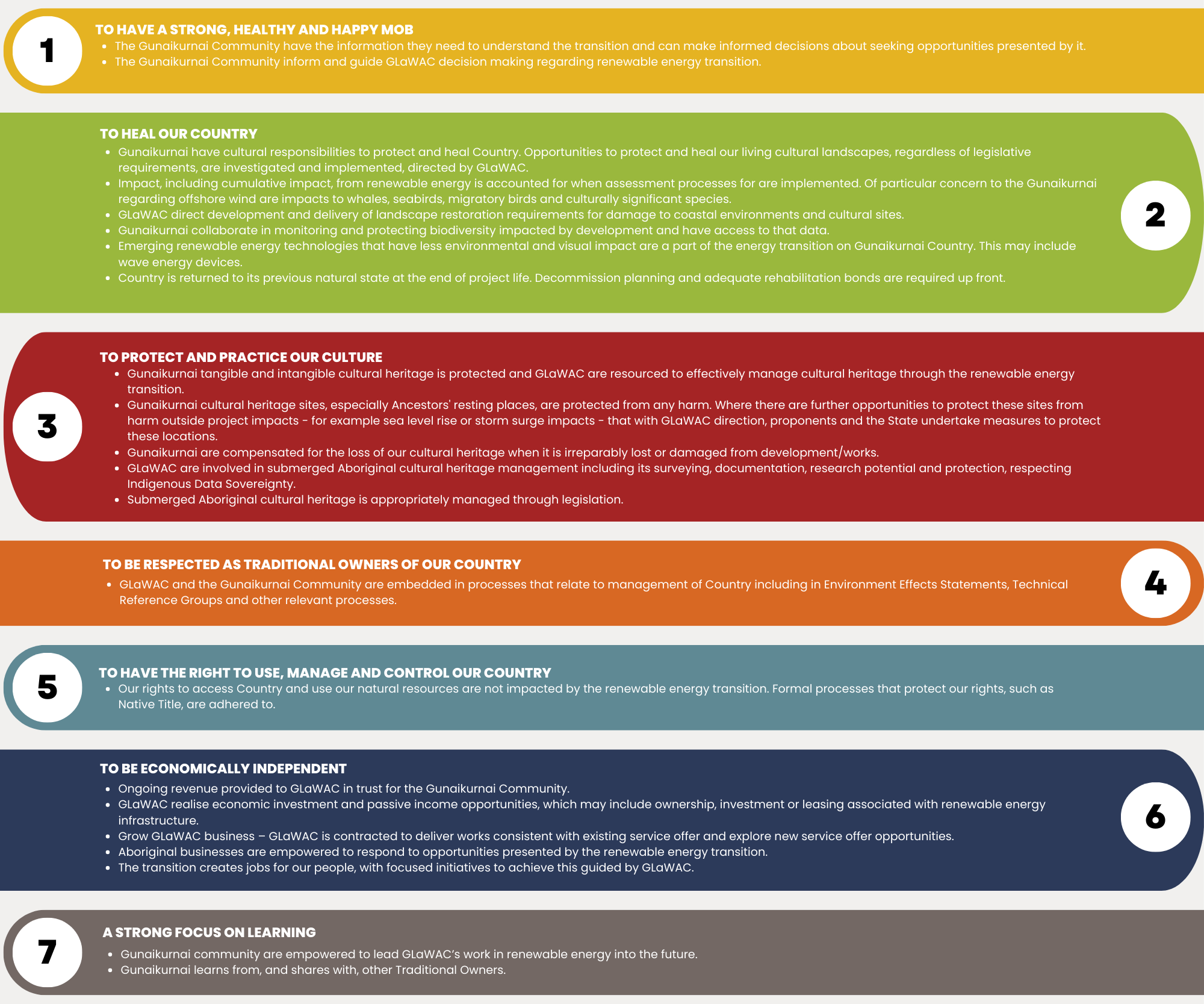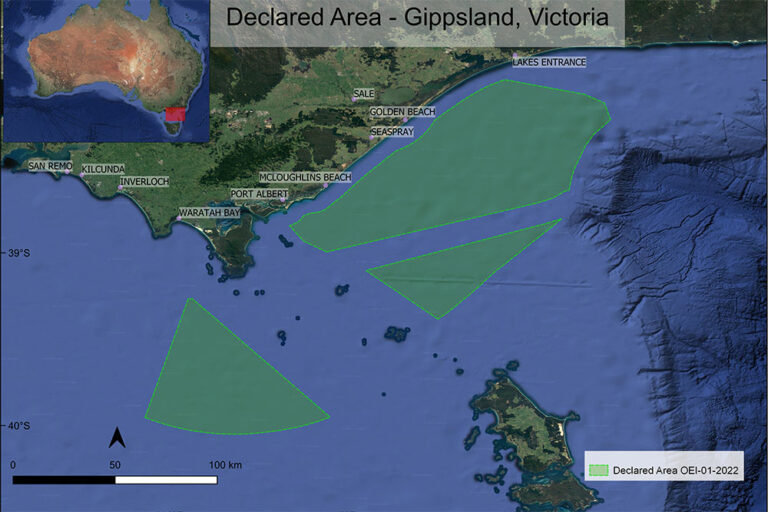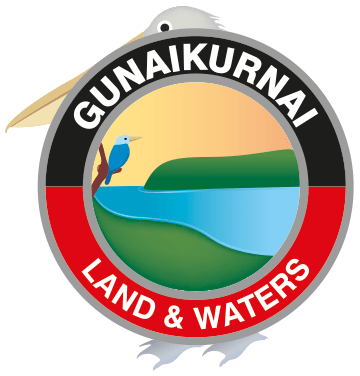Energy Transition
Gunaikurnai Country has been the centre of Victoria’s energy economy for more than a century. As the shift to renewable energy takes off, Country continues to be front and centre of the journey.
GLaWAC needs your guidance as we make ourselves a critical partner in this journey.
Climate change is bringing big changes to Country and culture, particularly along our coasts, and through fire, flood and extreme weather. The transition to renewable energy is an important one which will help reduce the effects of climate change. At the same time, the transition brings opportunities and challenges for our community.
Historically, the energy sector in Gippsland has taken irreplaceable cultural heritage from us and impacted our connection to Country – most notably through the gas pipeline project and the coal-fired power stations.
The Gunaikurnai have received little in return to remedy the impact on Country and our people.
GLaWAC has a big job during this energy transition to oversee the protection and healing of Country and to make sure that economic, business, employment, and lifestyle opportunities are available to our mob.
This is a complex space with lots of players, and we’re working hard to position ourselves to influence outcomes that have the biggest outcomes for mob.
Gunaikurnai Renewable Energy Strategy
In response to the threat of climate change, the renewable energy transition is proceeding at a rapid pace. Gunaikurnai Country will continue to be a focus of energy generation and storage, onshore and offshore.
GLaWAC is preparing a Renewable Energy Strategy to ensure that mob are well represented and that the rights and views of the Traditional Owners of Country are respected and understood through the transition.
The objectives of the strategy can be found below. The remainder of the strategy is in development, due for completion and publication in the second half of 2023.
In 2022, GLaWAC made a submission to Federal Government on the Gippsland offshore renewable energy declared area (see below). It is important to note that while Commonwealth waters start three nautical miles from the coastline, the proposed area does take in the seabed which, in recent archaeological history, was occupied by our Ancestors.
We will continue to provide members with relevant updates on renewable energy development projects as they gain pace.
If you have an interest in renewable energy transition, the strategy, projects or being a member of the GLaWAC Renewable Energy Community Advisory Group, please fill out the form and the Eco Dev team will be in touch.
Renewable Energy Zone
A smooth transition of electricity supply from existing coal producers to greener renewable options is a priority for both Federal and State governments.
To help achieve their goals, the Victorian government has set up six Renewable Energy Zones (REZs) across the state in areas with the greatest potential for renewable energy such as wind, sun, rain, tides, waves and geothermal heat.
One of these REZs falls within Gunaikurnai Country and will bring a huge injection of funding into Gippsland during development and ongoing through operation.
Any new energy development that is undertaken On Country must seek to fulfil the fundamental needs of our members as custodians of these lands. The rights and views of the Traditional Owners of Gunaikurnai Country must be respected and understood.
Consideration needs to be given as to how developers might engage with GLaWAC with regard to: engaging with First Nations; forming economic partnerships; facilitating training and long-term employment outcomes for Gunaikurnai people; providing for offsetting and a range of other economic measures including a sustainable revenue stream from power produced.
The map shows the declared offshore electricity infrastructure area in Bass Strait. The declared area off Gunaikurnai Country covers approx 15,000 square kilometres, and runs from offshore of Lakes Entrance in the east, to south of Wilsons Promontory in the west.
Offshore Renewable Energy Infrastructure Area Submission
In 2022, GLaWAC made a submission to the State about their Offshore Renewable Energy Infrastructure Area, and we continue to yarn with government and stakeholders about how they best consider the needs of you, our community, and our Country.







